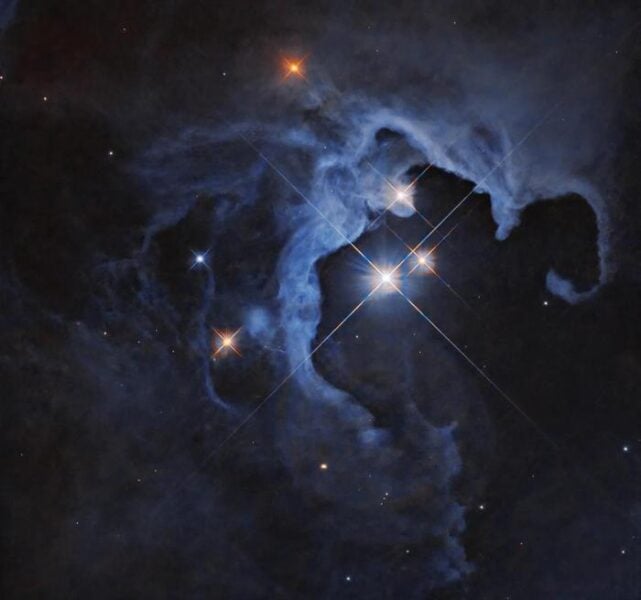Summary: New research from Durham University introduces a theoretical model to estimate the likelihood of intelligent life emerging in different universes based on their dark energy density. The study, published in Monthly Notices of the Royal Astronomical Society, suggests our universe may be less conducive to life than previously thought.
Journal: Monthly Notices of the Royal Astronomical Society, November 13, 2024, DOI: 10.1093/mnras/stae2236 | Reading time: 4 minutes
A New Formula for Life
In the 1960s, astronomer Frank Drake created an equation to estimate the number of alien civilizations in our galaxy. Now, researchers have taken a different approach, examining how the fundamental forces of the universe itself might influence the emergence of life.
The new model focuses on dark energy – a mysterious force making up more than two-thirds of our universe – and its role in star formation. Since stars are essential for life as we know it, understanding their formation could help estimate the probability of intelligent life emerging.
Our Unusual Universe
“Understanding dark energy and the impact on our Universe is one of the biggest challenges in cosmology and fundamental physics,” explains Dr. Daniele Sorini from Durham University. “The parameters that govern our Universe, including the density of dark energy, could explain our own existence.”
The findings suggest something unexpected about our cosmic home. The model predicts that a universe most efficient at forming stars would convert approximately 27 percent of ordinary matter into stars, compared to 23 percent in our universe. This indicates we don’t live in the most life-friendly possible universe.
Dark Energy’s Delicate Balance
Dark energy plays a crucial role by making the universe expand faster, counteracting gravity’s pull. This balance creates conditions where both expansion and structure formation are possible. For life to develop, matter must be able to clump together to form stars and planets, and these structures need to remain stable for billions of years.
“Surprisingly, though, we found that even a significantly higher dark energy density would still be compatible with life, suggesting we may not live in the most likely of universes,” Sorini notes.
Glossary:
- Dark energy: A mysterious force causing the universe’s expansion to accelerate
- Structure formation: The process by which matter clumps together to form galaxies and stars
- Multiverse: A hypothetical set of multiple universes
- Drake Equation: A formula estimating the number of alien civilizations in our galaxy
Quiz:
- What percentage of ordinary matter is converted to stars in our universe?
Answer: 23 percent - What percentage would be converted in the most efficient possible universe?
Answer: 27 percent - What proportion of our universe is made up of dark energy?
Answer: More than two-thirds - What does dark energy do to the universe?
Answer: Makes it expand faster, balancing gravity’s pull
Enjoy this story? Get our newsletter! https://scienceblog.substack.com/


